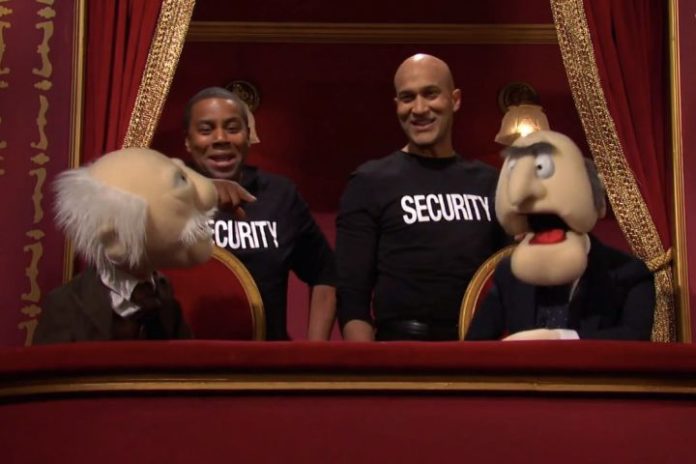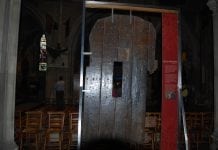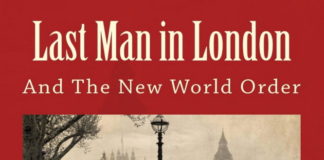A heckler is a person who can be found loudly interrupting a performance or speech with what he or she assumes to be hilarious or relevant commentary.
The original hecklers were to be found in the textile industry, in which ‘heckling’ involved straightening out and removing the impurities from flax fibres, prior to spinning and weaving into linen, using a special combing device.
And it was the hecklers of the politically militant Scottish city of Dundee who in the early nineteenth century developed the delicate art of heckling as we know it today. In the factory, the senior heckler, possibly the only literate one present, would read out the day’s news while the others toiled at their looms, shouting out their particular opinions and getting embroiled in furious debate with fellow workers.
By the nineteenth century, heckling had become a largely tolerated part of popular theatre performances: some vaudeville shows even had heckling written into the script.
More recently, The Muppet Show famously featured two grumpy old hecklers, Conrad Waldorf and Jerry Statler, while any stand-up comedian worth his or her salt has had to deal with the odd heckler over the years.
Billy Connolly is a master, once telling a heckler, ‘You should get an agent, pal, instead of sitting there in the dark handling yourself.’ The brilliant Bob Monkhouse knew how to deal with them too, once firing back at one particularly irritating member of the audience: ‘Half a million sperm and yours had to win.’
But the best responses to unwanted interruptions are usually off-the-cuff political ones that cannot be rehearsed. Nancy Astor, the first woman to sit as a Member of Parliament, once challenged Winston Churchill with the words: ‘Winston, if I were your wife I would poison your coffee.’ To which Churchill famously retorted: ‘Madam, if I were your husband I would drink it.’
Or take the celebrated riposte of Labour politician Dennis Healey, during a debate in Parliament in June 1978, in which he likened criticism by Conservative minister Geoffrey Howe – the mildest of hecklers – to ‘being savaged by a dead sheep’.
In the sporting arena there have been some great one-liners too. Cricketer Ian Botham once came up with a quick response when Australian batsman Rodney Marsh tried to put him off his stride with a well-aimed heckle. ‘How’s your wife and my kids?’ Marsh taunted. ‘The wife’s fine,’ Botham replied coolly, ‘but the kids are retarded.’ (See also barracking, luddite.)
‘Kilroy was here.’ Much has been speculated and written about the mythical Kilroy and why he seemed to be everywhere, including my school pencil case, during the second half of the twentieth century.
The idea behind the Kilroy phenomenon was that he could turn up anywhere in the world – but only in the most unusual and unlikely places. I wouldn’t be surprised to find his name etched into the dust on the moon. The phrase ‘Kilroy was here’ originated in America, where it was regarded as something of a national craze and was often accompanied by a cartoon of a little man with a big nose peeking over a wall.
It was so popular by the time of the Second World War that Russian psychopath Joseph Stalin, returning from the VIP bathroom during the Potsdam Conference in 1945, had to ask his aides who this Kilroy was. Captured German intelligence later revealed that the name was spotted so frequently on American military equipment that the other great psychopath of the era, Adolf Hitler, believed it to be a codeword and became paranoid in his attempts to find out what it meant.
The real Kilroy was revealed in 1946 by the New York Times to have been James J. Kilroy, a shipyard inspector who was based at the Fore River Shipyard in Quincy, Massachusetts, during the Second World War. He was identified after a national competition was run by the Amalgamated Transit Union in an attempt to unravel the mystery. Kilroy himself then explained how the phrase had arisen.
According to him, the wages of riveters were based on the number of rivets fitted during a shift and each man would mark his last rivet so his pay could be calculated by the shipyard inspector. If the next shift started before the inspector had made his calculations, however, the men had been known to move the chalk markings back many dozens of rivets in order to make their output appear far greater than it really was.
Kilroy put a stop to this by drawing a line beneath the final rivet of a particular shift and writing ‘Kilroy was here’, so that the next worker would know the area had already been inspected.
And that is how ‘Kilroy’ began turning up in the most unusual locations on board a ship: sealed inside the hull, upside down beneath the bridge, down near the waterline, and in numerous other seemingly inaccessible places.
Tens of thousands of servicemen encountered the strange Kilroy, sparking the legend that he was actually a protective spirit. In September 1946, a singer called Paul Page released a novelty song called ‘Kilroy Was Here’, which helped the phrase go global by the end of that decade.
Claptrap is another of those wonderful words used to dismiss someone’s opinion as utter nonsense. Indeed, when it comes to the words we use to describe something we don’t believe, ‘claptrap’ is in excellent company: balderdash and poppycock are notable examples, along with baloney, bollocks, codswallop and fiddlesticks.
But what did ‘claptrap’ mean originally? Well, it appears that one type of claptrap – or rather ‘clap-trap’ – was a mechanical device, invented by a Drury Lane stagehand in the mid-nineteenth century, which simulated the sound of hand-clapping, presumably to encourage it among members of the audience. It was not unlike the modern-day canned laughter that winds us all up on bad TV sitcoms. The falseness of the applause may well have been the inspiration for the word we still use today.
This story may well be true but the word itself is actually much older than that. Nathan Bailey’s A Universal Etymological English Dictionary, which was published in London in 1731 and went on to become the most popular dictionary of the day – quite some achievement considering how that century also produced Samuel Johnson – defines ‘claptrap’ as: ‘A name given to the rant and rhymes that dramatic writers, to please the actors, allow them to go off [stage] with, as much as to say it is a trap to catch a clap, by way of applause from the spectators at a play.’
This definition of the word was clearly still very much in use – and across the pond, no less – a century later, as recorded in an article from an 1835 edition of the New England magazine in which the writer complains that, in order to appease the lead actor in a play, a ‘piece must abound in claptraps’.
In time, these ‘claptraps’ – rousing speeches or topical jokes designed to elicit applause – became as unpopular among ‘serious’ actors and critics as the aforementioned mechanical device for manufacturing applause, although you’ll still hear plenty of them at the Christmas pantomime.
There are two types of caddie or caddy: one who carries your golf clubs around and the other in which your grandmother kept her tea leaves cool and dry.
The Cadets de Gascoigne were a French military unit made up entirely of the youngest sons of the Gascony aristocracy during the rule of Louis XIII (1601–43). The word cadet translates literally as ‘little head’ or ‘inferior head’, although ‘junior’ is the context in which it was used.
The image of these dashing young aristocrats, who counted writer Cyrano de Bergerac among their number, appealed widely to the French public. Indeed, two centuries later, in 1844, Alexandre Dumas, author of The Count of Monte Cristo, began publishing a series of stories that later became The Three Musketeers, in which the musketeers of the title were also members of the Cadets de Gascoigne.
Because of the close military ties, known as the Auld Alliance, between England’s historic enemies France and Scotland, many military terms were shared by the two armies during the late Middle Ages and beyond. Consequently, a ‘caddie’, as the Scots pronounced cadet, was a gentleman joining the army without a commission, with the intention of pursuing a military career.
Over time, the word took on a wider definition, indicating any unskilled young man, or errand boy, who was looking for a day’s work. Eventually caddies were employed only by golfers, thanks to the popularity of that game north of the border, and since the eighteenth century have had nothing more dashing or dangerous to do than carry a fat old man’s golfing bags around. And that’s not likely to have inspired any French novelists, is it?
But all of this has nothing to do with the tin in which your grandmother stored her tea, also called a ‘caddy’. That word is thought to have evolved from the Southeast Asian measurement of weight called a catty.
Approximately equivalent to one and a third pounds, the catty is a standard measure of tea, tons of which were imported into Britain on the tea clippers of the nineteenth century. (Incidentally, a ‘teapoy’, a three-legged occasional table upon which one might place a tray of tea, is not in fact named after the English national drink. The word is made up of the Hindi ti, ‘three’, and the Urdu pai, ‘foot’.)
When two or more people are at loggerheads they are generally engaged in a confrontation of some sort. It is an expression that originated in the late sixteenth century, when it was brought to prominence by William Shakespeare. At this time, a ‘logger’ was the word for a heavy wooden block fastened to the legs of a grazing horse to give it enough leeway to move around slowly but not enough to run away or jump over fences.
These wooden blocks would quite often get tangled together, causing the horses to which they were attached to jostle and fight in agitation. Shakespeare used the phrase in The Taming of the Shrew (1592), in which Petruchio castigates his incompetent attendants as ‘logger-headed grooms’.
An alternative theory relates to nautical warfare in the ancient world. In this context, a loggerhead was a weapon: a long pole with a cup fixed to the end, which was used to project hot tar at enemy ships in order to set fire to them. If both sides happened to be using the same weapon, they were, of course, ‘at loggerheads’. – Albert Jack
Albert Jack AUDIOBOOKS available for download here

English Word History, Origins & Meanings






























